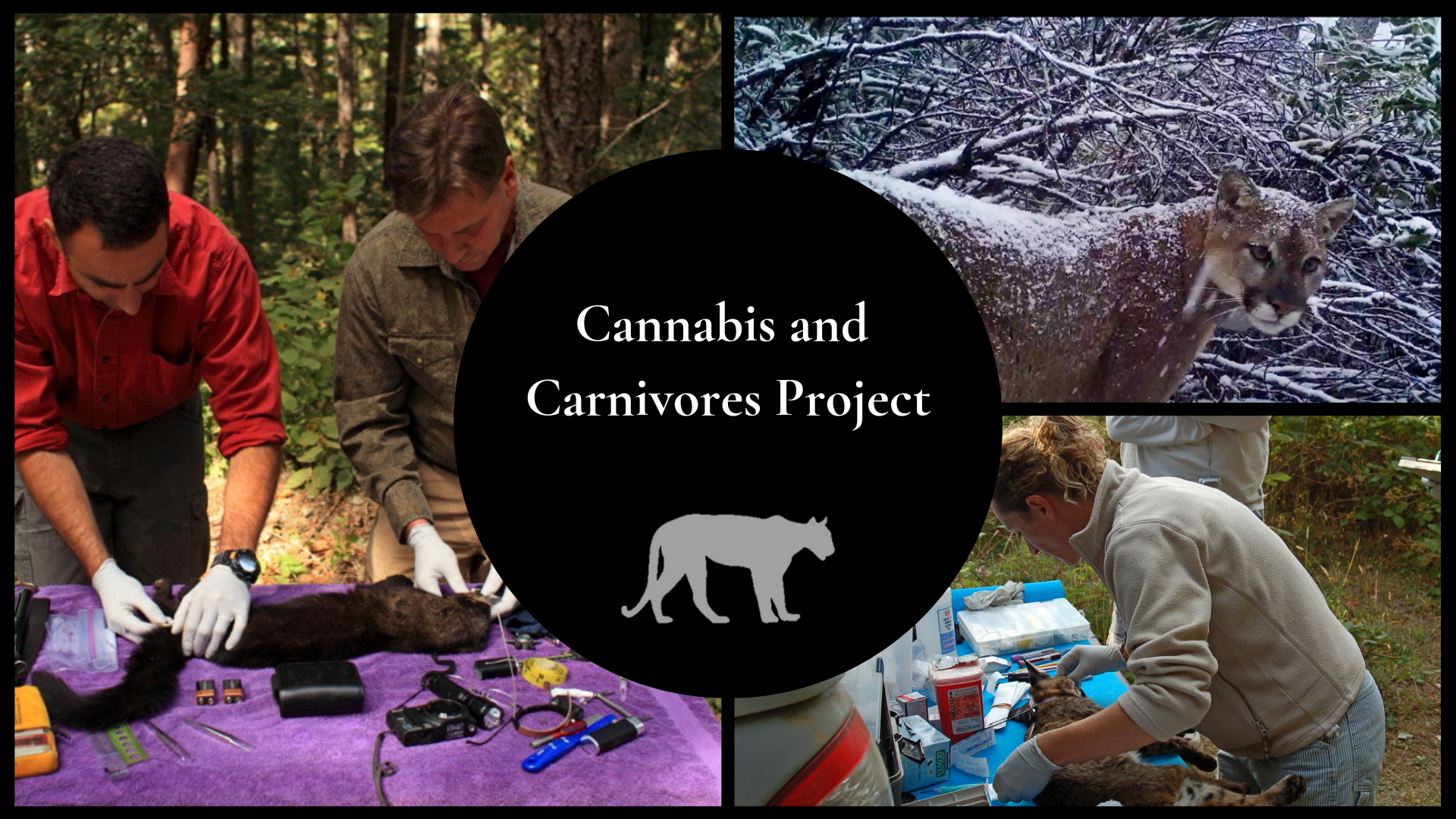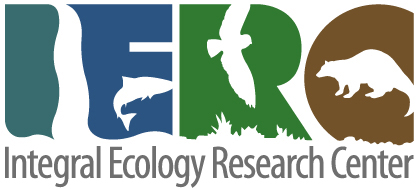
A keystone species is as a species that has a significant influence on an ecosystem, yet is low in number when compared to the rest of its community assemblage. The role of the keystone species can be filled by various taxa, including plants, wildlife, fish and even invertebrates. A goal of IERC is to investigate how individual cannabis cultivation sites or a landscape marred with sites alters a keystone species’ behavior or their role on a landscape level. We are focusing on two species, the mountain lion (Puma concolor) and the bobcat (Lynx rufus), in northern California, and examining whether private and public land cultivation influences their demographic activity patterns or the prey they consume. These investigations are pivotal in determining how cannabis cultivation affects these apex carnivores’ essential role in food webs of northern California.
Objective: IERC scientists are placing GPS and satellite collars on mountain lions and bobcats in northern California to determine the habitats they use and whether private or public land cannabis cultivation sites impacts their movement and behavior. We are investigating kill sites of these species and collecting relevant tissues to investigate if pesticides are contaminating these apex carnivores through their prey. Finally, we are conducting active restoration of cannabis sites near and within marked individuals home-ranges to monitor any changes in their activity patterns.
Time Frame: IERC initiated the project in 2016, and it will continue through the spring of 2020.
Project Support: United States Fish and Wildlife Service, Hoopa Tribe’s Forestry Department, California Department of Fish and Wildlife, Mountain Lion Foundation
